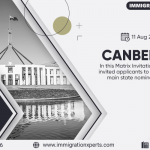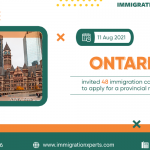Australia attracts thousands of skilled professionals every year, but the country uses a controlled, data-driven, and highly selective system to ensure only the most suitable candidates receive visas.
This system is called SkillSelect – the backbone of Australia’s points-tested skilled migration pathway.
Whether you are planning for Subclass 189, Subclass 190, or Subclass 491, understanding SkillSelect at a deeper level is essential for maximising your chances of selection.
This guide explains the system in detail, how it works behind the scenes, how invitations are issued, what factors impact your ranking, and what you can do to improve your EOI.
Ready to move to Australia? Get expert help now!
What is SkillSelect? (In Detailed Explanation)
SkillSelect is an online talent-management and invitation-based migration system introduced by the Australian Government in 2012.
It is designed to:
- Manage the flow of skilled migrants
- Match workforce shortages in different states
- Prioritise high-value occupations
- Ensure transparency in skilled visa invitations
- Maintain quota limits under the annual migration program
SkillSelect does not issue visas.
Instead, it filters, ranks, and selects skilled workers who may then be invited to apply for a visa.
In simple words:
SkillSelect is the gateway to skilled migration. Your visa process starts ONLY if you receive an invitation through SkillSelect.
Why Did Australia Introduce SkillSelect? (Purpose & Importance)
Australia switched from “first-come-first-served” to “invitation-based selection” to solve major issues such as:
-
Oversubscription of Applications
Earlier, thousands of applicants applied directly even when there was no demand for their occupation. SkillSelect ensures only in-demand skills are selected.
-
Matching Labour Shortages
State and federal governments continuously update occupation lists and invite candidates based on real-time economic needs.
-
Quality Control
The points system ensures:
- Better English proficiency
- Higher qualifications
- Stronger work experience
- Younger labour force
-
Efficient Processing
By inviting only selected candidates, processing times become faster and more predictable.
How SkillSelect Works: Complete Step-by-Step Breakdown
Step 1: Check Your Occupation on the Skilled Occupation List
The first filter is the Skilled Occupation List (under MLTSSL, STSOL, ROL).
Each visa subclass has its own accepted occupations.
Your occupation must be:
Eligible
In demand
Open for nomination
Different authorities update these lists regularly based on economic needs.

Step 2: Skills Assessment (Mandatory, Non-Negotiable)
A skills assessment verifies whether your skills match Australian standards.
What Skills Assessment Includes:
- Evaluation of your education
- Verification of work experience
- Assessment of relevance to Australian job roles
- English requirement (for some authorities)
- Document verification
Examples of Assessing Authorities:
- ACS – IT professionals
- Engineers Australia – Engineers
- ANMAC – Nurses & midwives
- VETASSESS – General occupations
- TRA – Technicians & trade workers
You cannot submit an EOI without a positive skills assessment.
Step 3: English Language Test
SkillSelect recognises multiple tests:
- IELTS General
- PTE Academic (most popular among India-based applicants)
- TOEFL iBT
- OET (for medical professionals)
Higher scores = higher points = better ranking.
Step 4: Points Calculation – The Core of SkillSelect
The minimum is 65 points, but realistically, invitations go to much higher scores depending on the occupation.
Check Your Eligibility in 60 seconds
Points Are Awarded For:
Age (Maximum 30 points)
Best range: 25–32 years
English Proficiency (Up to 20 points)
- Proficient → 10 points
- Superior → 20 points
Work Experience
- Overseas: Up to 15 points
- Australian: Up to 20 points
Qualifications
- Doctorate → 20 points
- Bachelor → 15 points
- Diploma → 10 points
Partner Skills
Additional points if your partner is also skilled.
State Nomination
- Subclass 190 → +5 points
- Subclass 491 → +15 points
Internal Competition
SkillSelect ranks you within your own occupation, not overall.
This means:
- A 75-point civil engineer may get an invitation sooner
- But a 95-point accountant may still wait
Because each occupation has different demand and invitation quotas.
Step 5: Submit Expression of Interest (EOI)
An EOI is NOT a visa application.
It is your profile submission into SkillSelect where you declare your points and skills.
What You Include in an EOI:
- Skills assessment results
- English scores
- Work experience details
- Education history
- Visa subclass preferences
- State/territory selection
- Partner skills (if applicable)
EOI Validity
- Valid for 2 years
- Can be updated anytime
- Your ranking automatically changes when you update points
- Incorrect claims lead to visa refusal
Step 6: Behind the Scenes – How Invitations Are Issued
SkillSelect runs automated invitation rounds (monthly or quarterly).
Factors That Decide Your Invitation:
- Points Score
Higher score = higher priority.
- Occupation Ceiling
Each occupation has a limit.
Once reached, no more invitations for that year.
- Demand in States & Territories
State authorities use your EOI data to issue nominations.
- Priority Processing Rules
Some sectors like healthcare, engineering, IT, and STEM may receive preference.
- Program Year Quota
Australia releases annual quotas under:
- Skilled Independent
- State nominated
- Regional
If a category fills early, invitations slow down.
Step 7: Receiving the Invitation
If selected, you receive an Invitation to Apply (ITA).
After receiving ITA:
- You have 60 days to lodge the full visa application
- All documents must match the EOI
- DHA verifies every claim
Any inconsistency = visa refusal for false or misleading information
Step 8: Apply for the Visa
This step involves:
- Uploading supporting documents
- Health examinations
- Police clearance certificates
- Evidence of work experience
- Qualification transcripts
If approved, you receive your Australian Skilled Visa.
Key Features of the SkillSelect System (That Most People Don’t Know)
-
It is a dynamic system
Your EOI rank changes every time:
- A new candidate enters
- A competitor updates their points
- States update their occupation lists
-
State nomination greatly increases your chances
A 65-point candidate can reach 80 points overnight with a 491 nomination.
-
Your EOI can be selected by multiple states
Different states may approach candidates based on shortages.
-
SkillSelect controls migration quality
Only the most suitable professionals enter the visa pipeline.
-
No guarantee of invitation
Even with high points, competition in certain occupations (IT, accounting) can be extremely high.
Advantages of the SkillSelect System
- Transparent and merit-based
- Faster allocation of invitations
- Reduces processing load
- Helps states access skilled workers
- Allows flexibility in managing economic needs
Is SkillSelect Difficult?
SkillSelect is not difficult, but it is highly competitive.
Your success depends on:
- Strong points
- Strategic EOI
- Correct occupation selection
- State targeting
- English score improvement
- Skills assessment accuracy
Most applicants benefit from professional guidance.
Conclusion:
Australia’s SkillSelect system is the heart of skilled migration. It ensures that only the best-qualified, highly skilled, and job-ready professionals enter the workforce.
If you understand how it works – and optimise your points strategically – the SkillSelect pathway can be your ticket to securing PR and starting a rewarding life in Australia.
Take the next step toward Australian PR-speak to our certified visa specialists and boost your chances of getting invited through SkillSelect.
- Email: info@immigrationxperts.com
- Call us: +91-9999467686, +91-8447-696555






